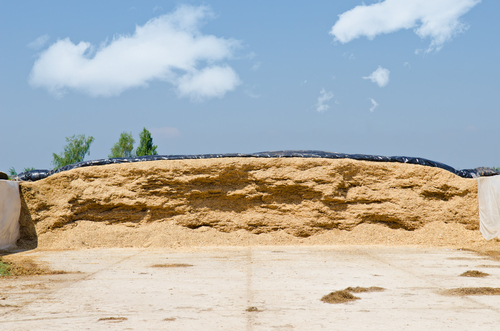Saving costs and reducing CO2 emissions, by good silage management
ProMyr™
Every farmer knows that efficient forage utilization save costs for producing milk.
What most farmers don’t realize, is by preventing forage dry matter losses, they also significantly reduces their CO2.
Most losses of forage on a dairy farm, can be associated with poor management of the silage making process.
We have three main stages which can be linked back to up to 40% of dry matter losses. In all the three stages, valuable dry matter is turned into CO2 and H2O by spoilage microorganisms;
Stage 1: Respiration losses after cutting the forage (5-10%)
Stage 2: Losses during a slow anaerobic fermentation phase in the clamp or bale (10-15%)
Stage 3: Feed-out losses, when the sealed silage is being fed out to the animals (15-20%)
Most of dry matter and CO2 are lost during the feeding out of the silage, because O2 is available to yeast and molds, growing in the silage.
This loss can only be prevented by using silage additives containing propionic acid, being the most effective molecule, to inhibit yeast and mold growth.
At an average loss of 20% dry matter, a farmer may lose Euro 12,50/mton, considering a price of Euro 50/mton for the silage.
Therefore, good silage management does not only save costs, but also reduces CO2 emissions.
If you have further questions, please contact our specialist Lennart Wiklund.
